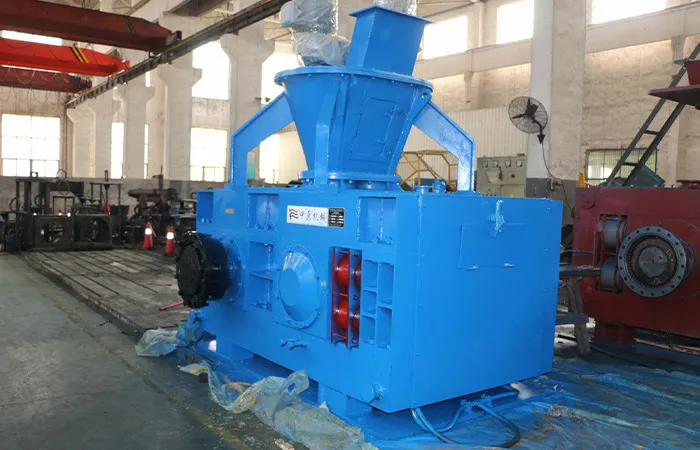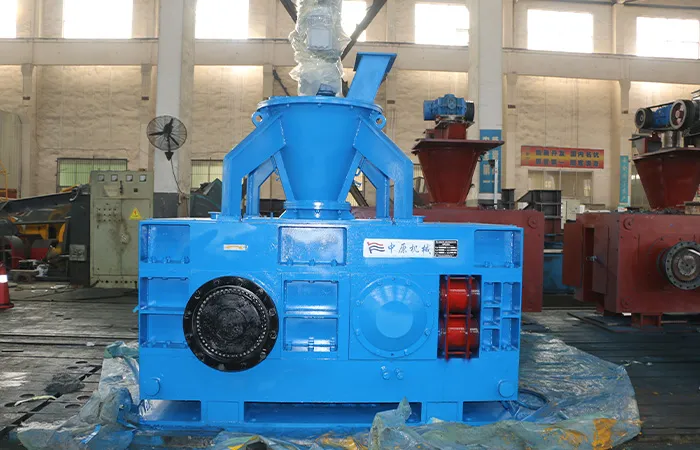

-
Products
-
Application



Raw Material Preparation: Ensure your raw material (e.g., sawdust, agricultural waste) is of the correct size and moisture content as specified by your machine's requirements (often below 15%). You may need to use a crusher or a dryer to achieve this.
Machine Inspection: Before starting, thoroughly inspect the briquette machine for any loose bolts, worn parts, or obstructions. Pay close attention to the screw propeller, forming die, and heating elements.
Lubrication: Check and lubricate all necessary parts as indicated in the machine's manual. Proper lubrication is crucial for smooth operation and longevity.
Cooling System (if applicable): If your machine has a cooling system (often water-based), ensure it is properly connected and filled.
Electrical Connections: Verify that the machine is correctly connected to a stable power supply with the correct voltage. Ensure all wiring is secure and the machine is properly grounded.
Safety Checks: Make sure all safety guards and emergency stop buttons are in place and functioning correctly. Ensure the work area is clear of any obstructions and that a fire extinguisher (powder, foam, or CO2) is readily accessible. Operators should wear appropriate personal protective equipment (PPE) such as respirator masks.
Main Switch: Turn on the main power switch of the machine.
Heating System: If your machine uses heat to soften the lignin in the raw material, turn on the heating system and set the temperature to the required level (typically between 120-300°C depending on the material). Allow sufficient time for the machine to reach the set temperature.
No-Load Running: Once the machine reaches the operating temperature (if applicable), run it without any raw material for a few minutes (around 3-30 minutes as per some recommendations). Listen for any unusual noises or vibrations. If any abnormalities occur, stop the machine immediately and identify the issue.
Material Feeding: Gradually start feeding the prepared raw material into the hopper. Begin with a small amount and slowly increase the feeding rate until briquettes are formed consistently and are of good quality. Avoid overfeeding, which can cause blockages.
Monitoring Briquette Quality: Continuously monitor the quality of the produced briquettes. Check for density, shape, cracks, and surface finish. Adjust the feeding rate, temperature (if applicable), and pressure as needed to maintain optimal quality.
Temperature Regulation: Maintain the set temperature of the heating elements to ensure proper briquetting. Fluctuations in temperature can affect the quality of the briquettes.
Discharge Area: Ensure the briquettes are discharged smoothly and there is adequate space for them to accumulate or be conveyed away. Some suggest directing the output towards a wall with a plank in front initially.

Stop Feeding: Gradually stop feeding raw material into the hopper.
Empty the Machine: Allow the machine to continue running until all the material inside the forming chamber and screw conveyor is expelled.
Reverse Running (recommended): Some manuals recommend running the machine in reverse for a short period (around 1 minute) after stopping the feeding to clear any remaining material from the screw propeller.
Turn Off Heating (if applicable): Switch off the heating system.
Main Switch: Turn off the main power switch.
Cleaning: Once the machine has cooled down, clean any residual material from the hopper, forming die, and surrounding areas. This helps prevent blockages and ensures efficient operation in the future.
Regular Checks: Periodically inspect the machine for wear and tear on components like the screw propeller, forming die, bearings, and heating elements.
Lubrication: Regularly lubricate all moving parts as per the manufacturer's recommendations.
Tightening: Ensure all bolts and connections remain tight.
Replacement of Worn Parts: Replace worn or damaged parts promptly to avoid affecting the machine's performance and lifespan. The screw propeller and forming sleeve are particularly prone to wear and may need periodic welding, grinding, or replacement.
Professional Maintenance: Schedule professional maintenance checks as recommended by the manufacturer.

Briquettes not forming properly: This could be due to incorrect moisture content, improper temperature, worn forming die, or incorrect pressure.
Briquettes cracking: May be caused by too high or too low moisture content, or excessive temperature.
Machine blockage: Often caused by overfeeding, incorrect material size, or foreign objects in the raw material. Stop the machine immediately and clear the blockage.
Uneven briquette density: Could be due to inconsistent feeding, temperature fluctuations, or issues with the forming die.
Unusual noises or vibrations: Indicate a potential mechanical problem. Stop the machine and investigate the source of the noise.
By following these steps and the specific instructions in your briquetting machine's manual, you can operate the equipment safely and effectively to produce quality briquettes. Remember that consistent monitoring and regular maintenance are key to maximizing the lifespan and performance of your machine.
How to calibrate HPGR roll gap settings
No information

Official Agent of ZY MINING in Russia.
Please enter here.
Add: Luoxin Industrial Zone,Luoyang City,Henan Province P.R.C.
Tel: +86-379-67313306
E-mail: gloria@zyksjx.com